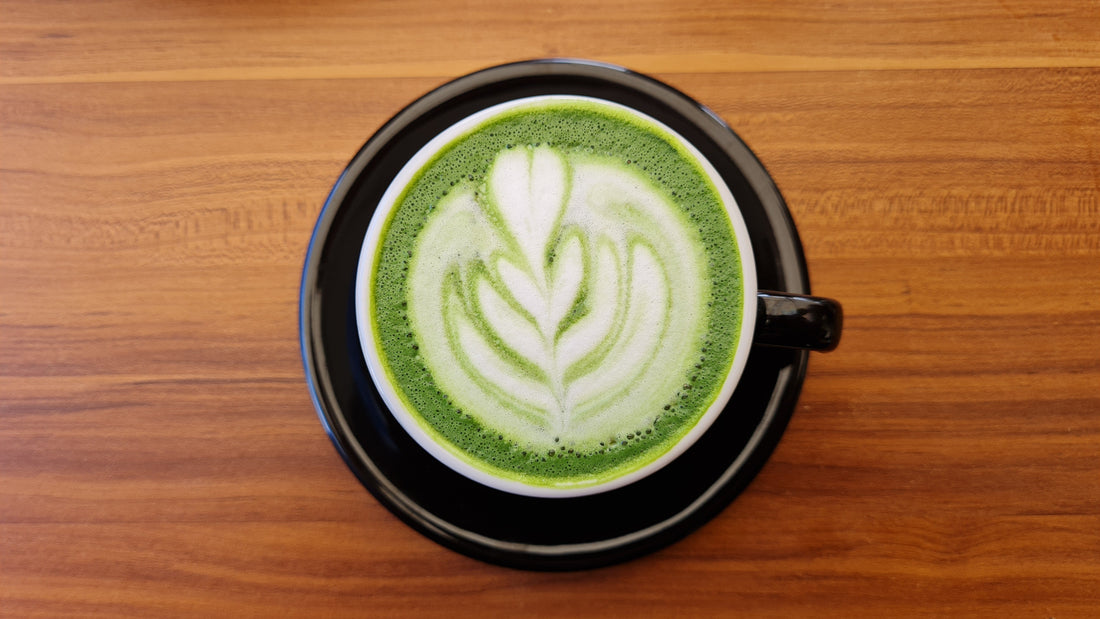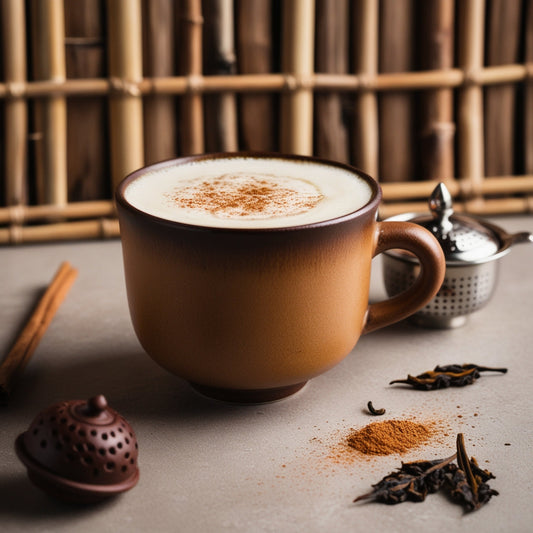Overview
Ever wondered that there could be a healthier alternative to Green Tea?
We are Talking about none other than Matcha. Matcha has gained immense popularity among tea enthusiasts, often overshadowing traditional green tea. Both originated in China initially. The cultivation process differ from each other. However, both have similar benefits. Matcha is a particular variety of Green Tea. In this guide, we will explore the key differences, benefits, and potential side effects of both to help you make an informed choice and Understand Green Tea.
Table of Content
- Introduction
- What is Green Tea?
- What is Matcha?
- Difference Between Green Tea and Matcha
- Health Benefits of Green Tea and Matcha
- Side effects of Green Tea and Matcha
- Conclusion
Introduction
A Closer look at Two Healthier Tradition. Both of them firstly appeared in China. However China banned Compressed Tea in 1391 matcha was abandoned in China but continued to develop in Japan thereafter. Both have differences; however, many consider matcha to have more benefits. Although there could be some extra side effects on matcha.
What is Green Tea?
The leaves and buds of the Camellia sinensis plant produce green tea. Unlike oolong and black teas, this undergoes a minimal oxidation and withering during processing, which helps preserve its natural properties. Several varieties exist, which differ substantially based on the variety of Camellia sinensis used, growing conditions, horticultural methods, production processing, and time of harvest. Renowned for its numerous health benefits, it is widely available and increasingly popular among tea drinkers. We should try out different blends like adding mint could make more benefits.

What is Matcha?
Matcha is a finely ground powder made from specially cultivated and processed green tea leaves, originally developed in China. However, the vibrant green color commonly associated with modern matcha was perfected in Japan, where the majority of matcha is now produced. The preparation starts several weeks before harvest and may last up to 20 days, when the tea bushes are covered to prevent direct sunlight. This slows down growth, stimulates an increase in chlorophyll levels, turns the leaves a darker shade of green, and causes the production of amino acids, in particular theanine.
Difference between Green Tea and Matcha
Both of them come from the same plant as other teas. The main differences are in their production processes and the content of the end product.
1. Cultivation process
Farmers grow green tea under direct sunlight, allowing the leaves to develop a fresh, light flavor. In contrast, matcha is grown under shade for about three weeks before harvesting. This shading process increases chlorophyll production and boosts amino acids, giving matcha its vibrant green color and rich, umami taste.
2. Taste
Green tea has a light and fresh flavor with grassy or earthy undertones, and depending on its preparation, it can sometimes taste a bit bitter Matcha is a soft powder that has a richer, sweeter flavor and a frothy texture.
3. Preparation
You can prepare both teas hot or cold. To make matcha tea, you grind the entire leaf into a powder and mix it with water. For green tea, it's best to use a mild water temperature of 180°-185° F and steep it for about 3 minutes. Water that is too hot may result in the release of tannins from the leaves, causing the tea to become astringent.
4. Caffeine
One cup of Matcha has a much higher percentage of caffeine than one cup of green tea. The longer the steep time, the higher the caffeine content will be. The caffeine content will lessen each time tea is re-steeped.
Health Benefits of Green Tea and Matcha
People have used green tea medicinally in countries such as China and Japan for thousands of years. Both have similar benefits. At first we will talk about the health benefits of Green Tea.
1. Contains plant-based antioxidant compounds
Green tea contains a type of polyphenol called a catechin. Catechins are antioxidants that help prevent cell damage and provide other health benefits. The most well-known and abundant catechin, epigallocatechin-3-gallate (EGCG), may help improve various health conditions or markers of disease.
2. May improve cognitive Function
A 2017 research paper found that drinking green tea may benefit cognition, mood, and brain function, possibly due to compounds like caffeine and L-theanine.
3. Helps in Heart Health
One large study in Japan followed 40,000 adult participants over 11 years and showed that daily consumption was linked to a low risk of death from cardiovascular diseases. In particular, the study examined the link between polyphenols (antioxidants) and cardiovascular diseases.
4. Helps In Diabetes
It can help regulate your blood sugar levels. It lowers your fasting blood sugar and your HbA1c when you have type 2 diabetes.
5. Benefits the Skin
It may have anti-inflammatory and anticancer benefits that may help you have healthier skin.
Now we have discussed about the Health Benefits of Green Tea we can start discussing about the Benefits of Matcha.
1. Rich in Antioxidants
Matcha is very high in antioxidants, especially catechins. Its most powerful catechin is epigallocatechin gallate (EGCG). EGCG may reduce inflammation in your body, help maintain healthy arteries, and promotes cell repair.
2. Reduces risk of Heart Disease
This is mainly attributed to the antioxidants and plant compounds in green tea, which are found in even higher amounts in matcha.
3. Boosts Relaxation and Alertness
L-theanine may increase alpha waves in your brain. These waves are linked to mental relaxation and may help counteract stress signals. matcha boasts much higher levels of L-theanine than other types of green tea. L-theanine also modifies the effects of caffeine in your body, increasing alertness without causing the drowsiness that often follows coffee consumption.
Side effects of Green Tea and Matcha
Side Effects of Green Tea:
Consuming green tea in moderation is essential, as excessive intake can lead to potential side effects. The Recommendation for consumption during pregnancy is to limit intake to 6 cups per day or no more than 300 mg of caffeine, as exceeding this amount may be unsafe.
- Many over-the-counter weight loss products use green tea as an ingredient, and some researchers have identified it as the likely cause of rare cases of liver injury.
- Studies have shown that high doses reduce blood levels of nadolol, a beta-blocker used for high blood pressure and heart problems, which may decrease its effectiveness. It may also interact with other medications.
However these all can be happened due to high usage. Now we can discuss about the Side effects of Matcha.
Side Effects of Matcha Tea:
- Matcha leaves may harbor contaminants including heavy metals, pesticides, and fluoride from the soil in which the plant grows. Using organic matcha may reduce your risk of exposure to pesticides, but even organic leaves may still contain substances from the soil that are harmful when ingested in large amounts.
- While individual tolerance varies, consuming high levels of the plant compounds found in matcha may cause nausea and symptoms of liver or kidney toxicity.
Most of the side effects are due to consuming both higher than the recommended level. Try to use it on the recommended level. It can be beneficial for everyone.

Conclusion
In conclusion, both are exceptional forms of green tea that offer numerous health benefits, making them popular choices for tea lovers worldwide. Whether you're seeking to improve cognitive function, manage weight, or enjoy a soothing beverage, both can support your journey to better health. Remember to consume them in moderation to reap the full benefits without experiencing potential side effects. Are you reading this blog to expand your preferences? Try incorporating Pu-erh tea alongside green tea and matcha in your daily routine and discover the delightful flavors and wellness advantages each has to offer.
Q&A Section
Q1. Is Matcha different from Green Tea?
A1. Yes, matcha is a specific type of green tea that is grown, processed, and prepared differently, resulting in distinct differences in terms of production, oxidation, caffeine and antioxidant content, and taste.
Q2. Does Green tea contain caffeine?
A2. Yes, a typical 8-ounce cup of green tea may contain between 30-50 mg of caffeine.
Q3. Which one has more Caffeine ?
A3. Matcha has more caffeine than green tea. An 8-ounce serving of matcha can contain around 70 mg or more, while green tea typically has 20-45 mg.






